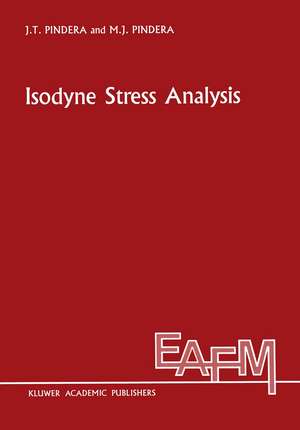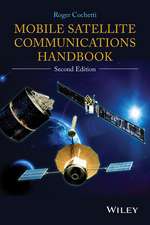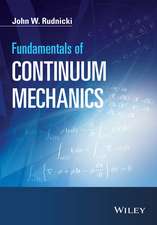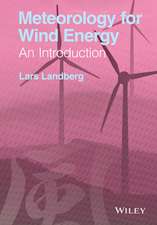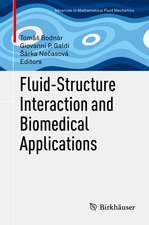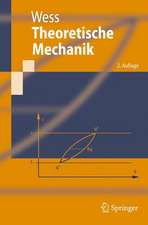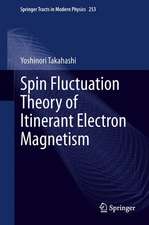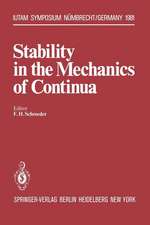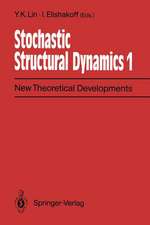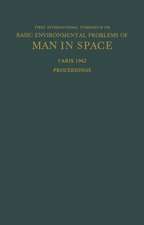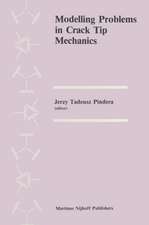Isodyne Stress Analysis: Engineering Applications of Fracture Mechanics, cartea 8
Autor M.J. Pinderaen Limba Engleză Paperback – 6 oct 2011
Preț: 390.25 lei
Nou
Puncte Express: 585
Preț estimativ în valută:
74.70€ • 81.17$ • 62.79£
74.70€ • 81.17$ • 62.79£
Carte tipărită la comandă
Livrare economică 21 aprilie-05 mai
Preluare comenzi: 021 569.72.76
Specificații
ISBN-13: 9789401069274
ISBN-10: 9401069271
Pagini: 292
Ilustrații: 288 p.
Dimensiuni: 170 x 244 x 15 mm
Greutate: 0.47 kg
Ediția:Softcover reprint of the original 1st ed. 1989
Editura: SPRINGER NETHERLANDS
Colecția Springer
Seria Engineering Applications of Fracture Mechanics
Locul publicării:Dordrecht, Netherlands
ISBN-10: 9401069271
Pagini: 292
Ilustrații: 288 p.
Dimensiuni: 170 x 244 x 15 mm
Greutate: 0.47 kg
Ediția:Softcover reprint of the original 1st ed. 1989
Editura: SPRINGER NETHERLANDS
Colecția Springer
Seria Engineering Applications of Fracture Mechanics
Locul publicării:Dordrecht, Netherlands
Public țintă
ResearchCuprins
1. Purpose. Approach. Methodology.- 1.1 Concept of isodynes.- 1.2 Scientific framework.- 1.3 Synthesis.- 1.4 References.- 2. Basic theoretical issues of stress analysis. Accepted models.- 2.1 Introduction.- 2.2 Underlying physical and mathematical models of stress states in plates.- 2.3 Local effects.- 2.4 Practical conclusions.- 2.5 References.- 3. Theory of analytical isodynes.- 3.1 Introduction.- 3.2 Concept of plane analytical isodynes.- 3.3 Determination of integration functions. Boundary conditions.- 3.4 Properties of plane analytical isodynes.- 3.5 The concept of differential analytical isodynes.- 3.6 References.- 4. Models of interaction between radiation and matter.- 4.1 Introduction.- 4.2 Basic components of pertinent elementary physical and mathematical models of interaction between radiation and matter.- 4.3 Transmission photoelasticity.- 4.4 References.- 5. Theory of optical isodynes.- 5.1 Concept of plane optical isodynes.- 5.2 Concept of differential optical isodynes.- 5.3 References.- 6. Theory of isodyne experiments.- 6.1 Actual constitutive relations for viscoelastic materials used in isodyne measurements.- 6.2 Responses of isodyne measurement systems. Transfer functions.- 6.3 References.- 7. Experimental techniques of isodynes.- 7.1 Basic techniques.- 7.2 Particular techniques of isodynes.- 7.3 References.- 8. Perspectives.- 8.1 Stress state approach.- 8.2 Deformation state approach.- 9. Two-dimensional stress states.- 9.1 Introduction.- 9.2 Beam loaded by concentrated forces.- 9.3 Circular disk loaded by concentrated forces.- 9.4 Closing comments.- 9.5 References.- 10. Contact problems.- 10.1 Introduction.- 10.2 Experimental investigation.- 10.3 Two beams in contact.- 10.4 Three beams in contact.- 10.5 Closing comments.- 10.6 References.- 11. Three-dimensional local effects.- 11.1 Introduction.- 11.2 Four-point bending of a notched beam.- 11.3 Three-point bending of an unnotched beam.- 11.4 References.- 12. Stresses in composite structures.- 12.1 Introduction.- 12.2 Three-ply structure with a transverse crack.- 12.3 Laminated beam with interlaminar disbonds.- 12.4 References.- Name index.
